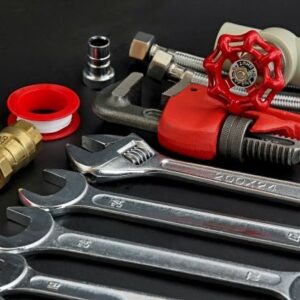With the right saw, you can turn a difficult job into an easy project. Saw blades can cut through everything from drywall sheets to metal rods. There is an enormous selection of saws and blades, and it can be difficult to select the right option for your job. Here’s a guide to help you find the best type of saw for your next project.
The Importance of a Good Saw
Whether you work in the construction industry or take on projects around the home, you need a good saw. With the right equipment, you can breeze through your next project without any problems. It may seem like all saws are the same, but most are designed to handle specific jobs. You want to find a great saw that can effortlessly cut through your materials. A good saw gives you a precise cut every time you use it. Remember that using the wrong saw for the job could be a safety risk. You need to select the right saw for your needs. Otherwise, you could misuse it, leading to less than precise cuts or injuries.
When choosing a saw, you have two general options: a hand or a power saw.
Hand Saws
The hand saw is an essential tool for virtually any workshop. Everyone from expert carpenters to DIY enthusiasts should have a hand saw in their toolbox. This type of saw can perform various cuts on different materials. There’s more than one type of hand saw; depending on the job, the saw might have different counts, contours, and shapes of the teeth. You can use a hand saw to cut through drywall, metal, or wood.
Basic Hand Saw
This saw is a staple tool for cutting drywall, wood, or fiberglass. In general, a basic hand saw will not give you a precise cut.
Wallboard Saw
The wallboard saw is also called a drywall saw. You can use it to make cuts to sheetrock and drywall. It’s also used to cut holes for fixtures, piping, and electrical outlets.
Pull Saw
The dovetail saw will deliver flush cuts and smooth incisions. You can use this saw for wooden, laminate, and plastic materials.
Coping Saw
This is the right tool for the job when you need a precise cut for molding installations. The coping saw is designed to create joining edges and corners.
Hacksaw
A common presence in toolboxes, the hacksaw is a versatile tool that can cut PVC, metal, steel, conduit, pipes, and bolts. Hacksaws are great for sawing materials harder than wood.
Crosscut Saw
The term crosscut comes from the particular technique of sawing. When you need to cut across the wood grain, choose this saw. It has backward-angled teeth with a beveled edge to create a clean and accurate cut.
Rip Saw
This all-purpose tool is used when you need to make a rough cut for woodworking. The teeth alternate between right and left bends.
Bow Saw
A bow saw works like a pruning saw, making it a great choice to cut through dense wood. You can use it to cut through thick vines, shrubs, tree limbs, and low branches.
Fret Saw
When you need to cut through paneling or thick wood, the fret saw’s high back and thin blade deliver a precise cut. Plus, it can create angled cuts to those flimsy pieces of wood.
Backsaw
The backsaw is often used with a miter box to get specific angles and cuts. This tool has a stiff and stable blade with a thick spine.
Power Saws
Consider a power saw when you need to get the job done quickly or don’t want to use manual power. These tools will have a cord or battery pack to power the saw. You can count on them to deliver precise cuts through many types of materials. Power saws have sturdy blades, chains, and a set of teeth. Some people love these tools because they make cutting easier than using a hand saw.
Circular Saw
A circular saw will have the blade mounted directly on the motor shaft. You can use this saw to make straight cuts for cabinets or other woodworking projects.
Table Saw
This saw is mounted on a sturdy table. You can make precise straight cuts with this tool. All you have to do is adjust the blade to the exact dimension of the cut.
Miter Saw
A miter saw is a versatile tool that can create perfect 90-degree crosscuts. There are three types of miter saws: the basic miter saw, the compound miter saw, and the sliding compound miter saw.
Reciprocating Saw
The reciprocating saw is another universal tool. This saw can cut plastic, plasterboard, metal, and wood. Since it has a flexible blade, it can cut in those hard-to-reach places. However, this saw should not be used when you want a precise cut.
Jigsaw
A jigsaw can make a straight or curved cut in metal, plastic, wood, or tile. You must add the right blade to the saw if you want to cut a specific material.
Difference Between Power Saws and Hand Saws
Now that you know more about hand and power saws, it’s good to know some differences between the two. Hand saws are designed for smaller or delicate projects that need a precise cut. Most of these saws are less costly than the powered options. A hand saw is a good option for starting a woodworking hobby. Additionally, these tools will not make noise as you cut your materials.
Power saws are a preferred option for many people because they can cut quickly. When you use these tools, it will create a lot of noise. These tools can also be dangerous and are not easy to handle like hand tools. However, many people love that these tools can quickly make precise cuts without too much manual effort.
What Is a Good Saw for Beginners?
If you’re uncomfortable handling a power saw, you might want to stick to a hand saw. These saws take a little effort to use, but you will get a feel for handling these tools. A basic hand saw will make a great addition to your toolbox. For those who want a little more power, a table saw makes a good entry point for the beginner. These saws are more sturdy and have guides to give you a precise cut.
What’s the Best Saw to Buy for Home Projects?
For typical home improvement projects, you should at least have a basic hand saw, a reciprocating saw, and a miter saw. With these tools, you can make precise cuts on everything from wood to metal.
Which Saw Is the Best for Cutting?
Depending on your project, there are a variety of saws that can get the job done. All of these saws are designed to cut through certain materials. Consider a miter or table saw for your next project if you want an accurate cut.
Now that you know the different types of saws, you can choose the right one for your project. Find a True Value near you to see a variety of power saws and hand tools that you can use for your next job.












